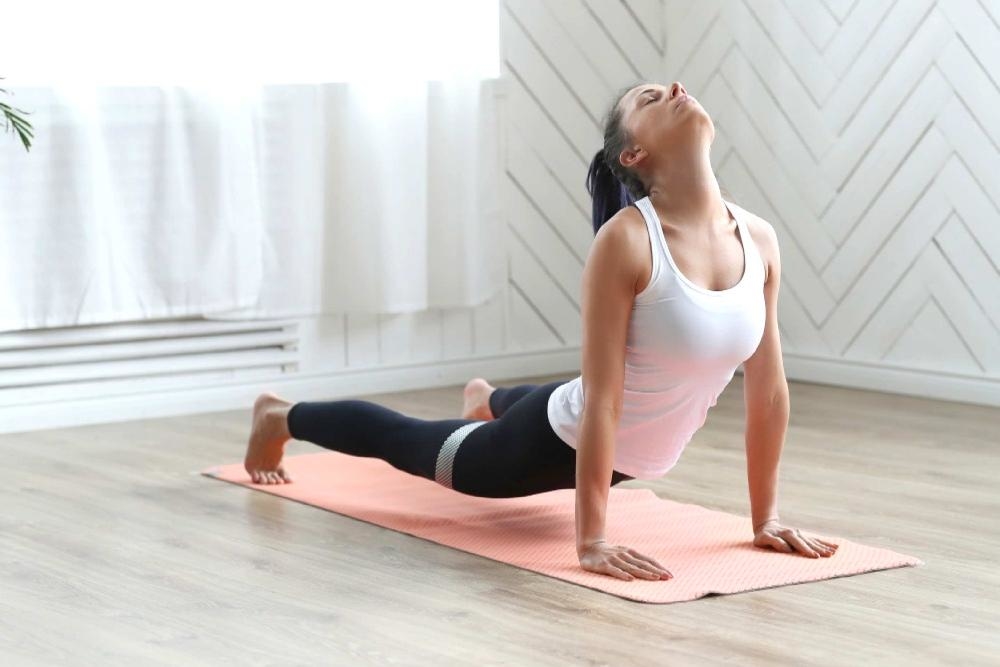The choice between yoga and walking often arises in the quest for optimal health. Both activities have garnered praise from healthcare experts.

This article explores the science behind yoga and walking, exploring their differences and benefits. Discover which one aligns with your wellness goals and lifestyle. Additionally, try Whey Protein in supporting physical activities.
Choosing Between Yoga and Walking for Better Health
The choice between yoga and walking often arises when pursuing a healthier lifestyle. Both activities offer numerous benefits, but the question remains: which one is superior? Let’s delve into the science behind these physical activities to help you make an informed decision.
Calorie Burn: Yoga vs. Walking
If your goal is weight management, yoga may hold the upper hand. Statistics reveal that an hour of power yoga can burn approximately 340 calories, surpassing the 242 calories burned during an hour of brisk walking. Yoga emerges as the more effective option for weight control and diabetes management.
Mood Elevation: The Yoga Advantage
Scientific data highlights yoga as a superior mood elevator when compared to walking. Yoga stimulates the brain’s GABA levels, responsible for serotonin production, also known as the “happy hormone.” Higher GABA levels increase serotonin secretion, combatting depression, mood disorders, and anxiety. While both activities elevate mood, yoga offers a greater mood-enhancing effect.
Holistic Fitness: Yoga’s Unique Offering
While walking provides physical and mental benefits, yoga takes it further by encompassing spiritual well-being. Regular yoga practice enhances overall well-being, reducing anger and anxiety. Pranayama, a vital component of yoga, improves breath control, enhances mindfulness, and sharpens the five senses. Yoga’s holistic approach nurtures both body and spirit.
Mental Clarity and Concentration
Engaging in physical activities like yoga enhances mental alertness, reducing the influx of intrusive thoughts. Yoga’s blend of asanas, pranayama, and meditation techniques strengthens the mind-body connection, fostering mental resilience and acuity.
Blood Sugar Control: Yoga’s Edge
For those concerned about blood sugar levels, yoga offers superior benefits. Specific yoga postures, like Ardha Matsyendrasana and Mandukasana, are tailored to diabetic patients. These postures stimulate insulin production by directing the brain to activate the pancreas. Insulin regulation is crucial in managing blood sugar levels, making yoga a powerful ally for people with diabetes.
Stress Management: Yoga’s Comprehensive Approach
Both walking and yoga alleviate stress and elevate mood. However, yoga goes beyond mood enhancement, promoting mental concentration and enduring well-being. It relaxes tense muscles, tissues, and the mind, improving sleep quality and treating sleep disorders.
Radiant Skin and Beauty Benefits
Yoga’s holistic impact extends to the skin, rejuvenating it from within. The practice restores the brain’s chemical balance and increases the oxygen supply to the blood through pranayama. This oxygen-rich blood invigorates cells and tissues, producing glowing and vibrant skin.
Conclusion
Choosing yoga and walking depends on your fitness goals and preferences. Yoga offers a comprehensive approach to well-being, encompassing physical, mental, and spiritual health. Whether you seek weight management, mood elevation, blood sugar control, stress relief, or radiant skin, yoga is a compelling choice for better health.
Incorporating the right nutrition into your wellness journey is equally crucial. Add the Protein Powder, like Whey Protein Isolate, to support your physical activities and overall health.









